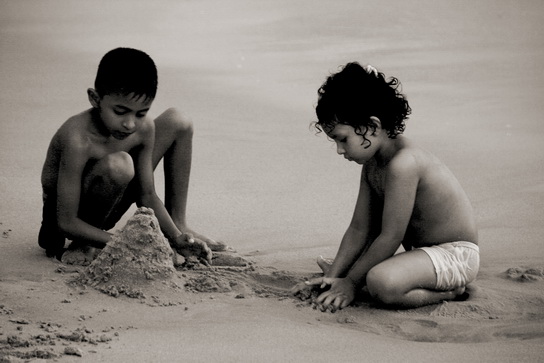
For child research, diversity is key
As the world reacts to the new President’s radical, many say divisive policies on immigration and refugees, this recent blog from leading US nonprofit research organisation, Child Trends is a reminder why a diverse team is so important in research with children and young people.
Pick up any data report from Child Trends, and you’re likely to read about racial and ethnic disparities in child and youth outcomes. From healthy birth outcomes to graduation rates to youth unemployment, non-white children and youth fare worse than their white peers. At Child Trends, we’re committed to bringing those disparities and their root causes to the attention of policy makers and to those who run programs and services for children and youth. Among the factors that help us do this well: a diverse workforce.
The child population in the United States is increasingly diverse. As of July 2016, roughly half (54 percent) of children in the United States are white, one quarter (25 percent) are Latino, and about 1 out of 7 (15 percent) are black. Asian-American, Native American, and Hawaiian/Pacific Islander children and those of two or more races comprise the remaining 9 percent.
Any research on the nation’s children should take the diversity of the child population into account. Promoting racial/ethnic diversity among researchers is one way to do that. A multitude of experiences and perspectives can improve the research process at every step, from constructing relevant research questions to quality data collection to analyzing and interpreting findings. There is mounting evidence that racial/ethnic diversity is good for an organization’s bottom line, since it broadens the potential talent pool and invites new ideas and approaches. The same holds true in research: diversity serves creativity and innovation, and it may improve the quality and breadth of research as well.
Role models
It is also important for children to be able to concretely imagine their future selves through relationships with adult role models who can relate to their life experience. Public school classrooms provide a great example. Given the growing diversity among the nation’s children, there is often a mismatch between the racial/ethnic makeup of children and teachers in public schools. All children—majority and minority—benefit when they have teachers of different backgrounds; it debunks false narratives about racial/ethnic groups, provides mentors, role models, and advocates for a host of children, and is even associated with better academic outcomes.
Child Trends is committed to having a talented and diverse research team with members who have a rich understanding of the communities that we serve. As a member of the Human Resources team, I am on the front line of Child Trends’ efforts to include more voices and perspectives in order to develop innovative and high-quality research to share with practitioners and policymakers. Our staff members step out of their comfort zones and work with others with different backgrounds and perspectives. This is admittedly hard to do. But diversity makes us stronger, as individuals and as an organization. And most importantly, it better equips us to fulfill our mission of improving the lives of children and families.
Olivia Carter
Human Resources Coordinator, Child Trends
(With editorial and research support from Kimberly Turner, Research Scientist)
Photo: Dhammika Heenpella




